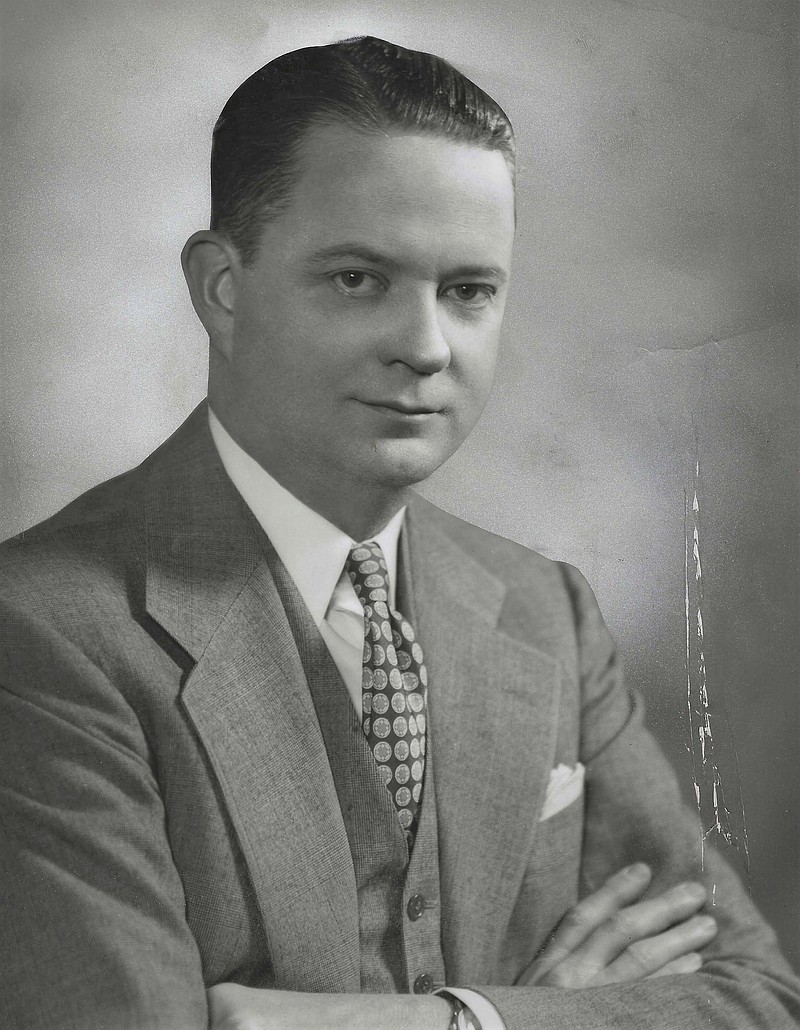Howard A. Rusk possessed two interests that were eventually able to intersect - a career as a physician and service in the armed forces of the United States.
While serving in uniform during World War II, the military provided the opportunity to explore his passion for rehabilitative medicine, which later earned him worldwide acclaim and resulted in in the naming of medical facilities in his honor.
Born April 1, 1901, in the small community of Brookfield in north-central Missouri, Rusk had an early exposure to human anatomy since his father was an undertaker. Additionally, he was able to assist a local country doctor, accompanying him on house calls and observing as he performed a variety of surgical procedures.
Following his graduation from Brookfield High School in 1919, he went on to attend the University of Missouri, where he received an introduction to the military structure.
In 1922, his junior year at the university, Rusk was not only a student assistant in medical bacteriology within the School of Medicine, but also demonstrated leadership competencies after his appointment as the cadet colonel for the Reserve Officer Training Corps (ROTC) program.
"The National Defense Act of 1916 yielded Army ROTC units closely resembling the college-based Cadet Command formations of today," explained an article on the official website of the Army ROTC. "Many premier academic institutions such as Harvard, Yale and Princeton universities and Dartmouth College petitioned for military commissioning units."
Upon graduating from Missouri in 1923, rather than pursuing a military career and commission as an officer, he enrolled at the University of Pennsylvania and spent the next two years earning his medical degree. In 1925, he returned to Missouri as a medical intern at St. Luke's Hospital in St. Louis. The following year, he married his fiancée, Gladys Houx.
The next several years required an investment of sweat and time to establish his medical practice, but when the United States was drawn into World War II on Dec. 7, 1941, Rusk "knew the war would be long and tough, and that I had a place in it," he wrote in his biography, "A World to Care For."
He added, "I could have stayed out of it if I wanted to; I was too old to be drafted. But sometimes a person does things because he feels that he has to do them."
Closing out his medical practice in St. Louis, Rusk was appointed to the rank of major in the medical service of the United States Army Air Forces in August 1942. His first assignment became that of chief of medical services at the 1,000-bed hospital on the military base at Jefferson Barracks in South County, St. Louis.
His passion to find effective and unique ways to rehabilitate wounded and ill servicemembers quickly earned him newspaper headlines. During a meeting of the Tuberculosis and Health Society of St. Louis, he described ways to maintain good spirits among wounded military members in recovery.
"Educational motion pictures and a variegated program of instruction has been set up to relieve the boredom of confinement to a hospital ward pending assignment back to active duty," Rusk was quoted in an an article printed in the St. Louis Post-Dispatch on Dec. 8, 1942.
The following year, Rusk's continued devotion "to the rehabilitation of handicapped men and women" was highlighted in an article appearing in the Sioux City Journal on Sept. 12, 1948, three years after the end of the war.
As the newspaper detailed, while working at Jefferson Barracks, Dr. Rusk noticed many military patients were staying in the hospital longer than their civilian counterparts with similar illnesses or injuries. This observation inspired two changes to assist with the rehabilitation of military patients.
"First he tried to bring to the hospital some simple equipment each patient could use to improve himself in his (military) job," the article explained. "And second, as soon as the patient was physically able, he was started on a system of exercises, easy and simple at first but gradually getting harder and more complicated."
Results were impressive, and most of these military patients returned to their units instead of being caught in a protracted treatment cycle. Impressed with these outcomes, Maj. Gen. David Grant promoted Dr. Rusk to lieutenant colonel, appointed him as chief of the convalescent training program and challenged him to expand his convalescence program in all 250 of the Army Air Force hospitals.
In 1944, Lt. Col. Rusk joined fellow U.S. Army Air Forces surgeon James B. Brown in receiving the annual American Design Awards for their work with disabled war veterans. As explained during the awards presentation, the reconditioning program overseen by Rusk was adopted by all service branches.
The recipient of a Distinguished Service Medal, Rusk was discharged from the military in late 1945. In the years after the war, he founded the Institute of Physical Medicine at New York University, which was later renamed Rusk Institute.
Through his lifetime of work, Dr. Rusk has become widely acclaimed as the founder of rehabilitative medicine and, in 1974, the University of Missouri dedicated a rehabilitation facility in his honor - the Rusk Rehabilitation Center. The World War II veteran was 88 years old when he died in 1989, and was laid to rest in his birthplace of Brookfield.
Affirming Dr. Rusk should be considered for a Nobel Prize, the Dec. 31, 1972, edition of the Arizona Republic reported, "No national figure was too big or too imposing for him to tackle if he thought by doing so he could he could further the cause of rehabilitation."
Noting the many servicemembers whose lives he helped reclaim, the newspaper added, "With his help, they have snatched success from defeat, happiness from despondency and, best of all, self-respect from self-denigration."
Jeremy P. Amick writes on behalf of the Silver Star Families of America.

